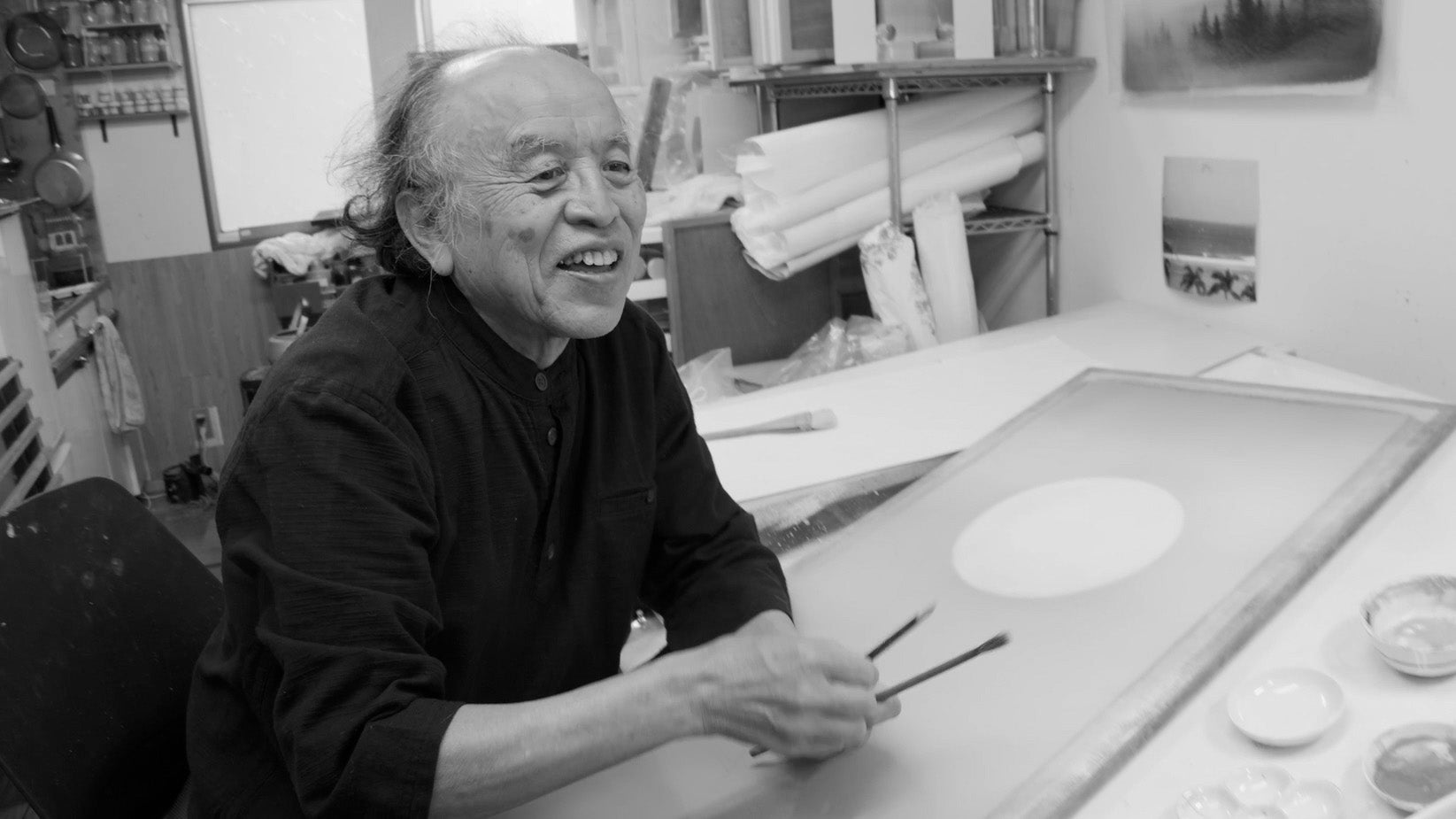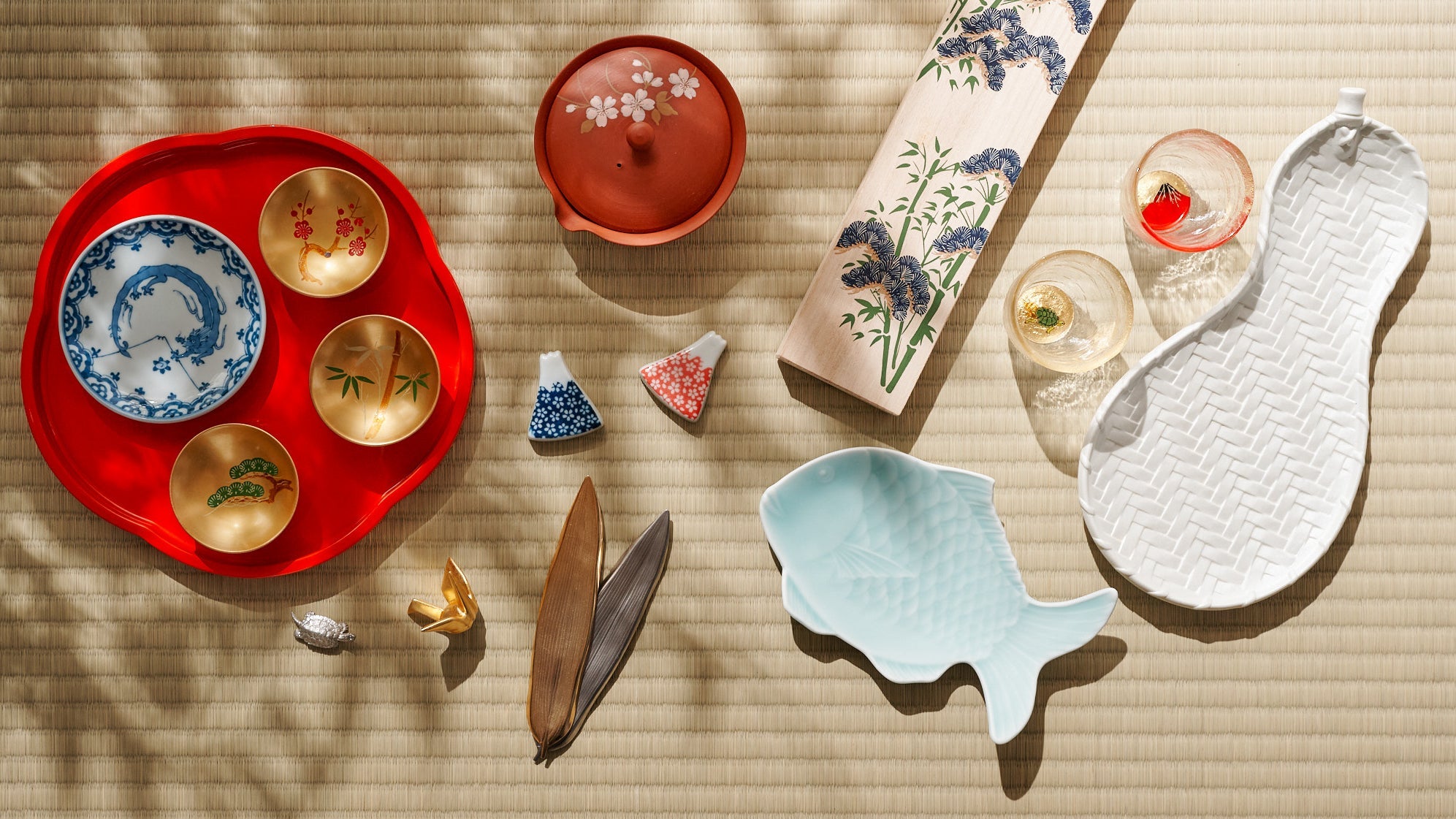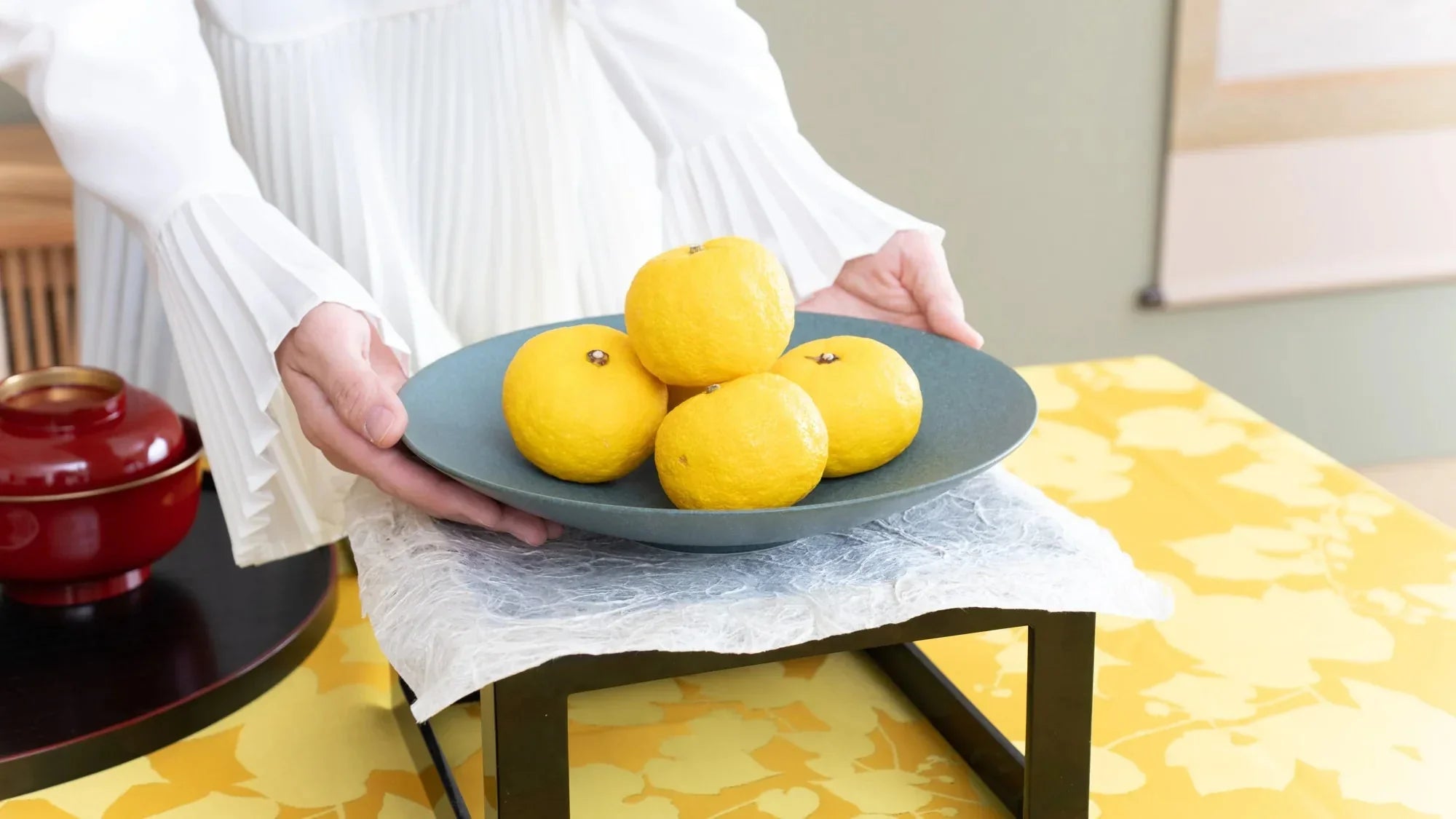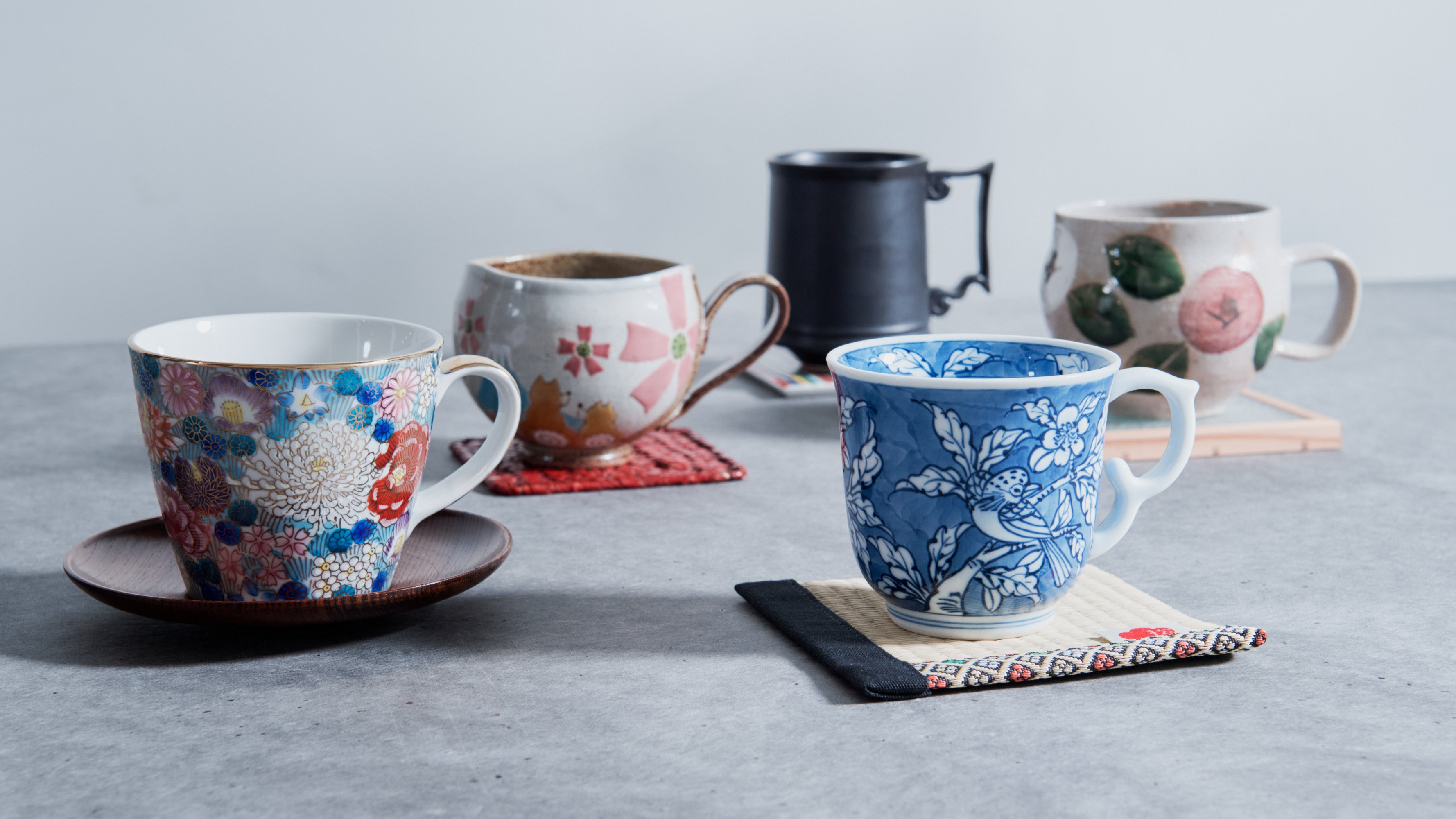
Breathing Bamboo: The Art of Japanese Painting by Mino Shodo
Written by Team MUSUBI
In a quiet residential area nestled in the natural beauty of Gifu Prefecture, nihonga (traditional Japanese painting) artist Mino Shodo works from his private atelier. Renowned for his refined brushwork on silk and his ability to breathe contemporary sensibility into the traditional art of kakejiku “hanging scrolls”, Mino’s art embodies a delicate expressiveness paired with confident, flowing sense of movement. His piece Bamboo Grove is a serene hanging scroll that conveys a quiet yet dignified sense of life. Though inspired by the ancient pilgrimage path of Kumano Kodo, the work is not a literal depiction of any real landscape. Rather, it captures Mino’s inner vision—an imagined bamboo forest drawn from memory, intuition, and years of artistic pursuit.
While rooted in the traditions of Japanese painting, Mino has spent decades developing his craft in silk-based scroll work. We spoke with him about the creative process behind Bamboo Grove, and the spirit he has woven into each brushstroke.
Table of contents
The Path to Becoming an Artist
His early years
Mino Shodo has been passionate about drawing since he was a child. Although he never attended an art university, a friend introduced him to Kaitakudo Art , a company that specializes in kakejiku, a cherished form of Japanese wall art.
It was there that he discovered the traditional technique of painting on silk. This material, with its delicate texture, is difficult to work with. Controlling the flow of the brush and the absorption of ink requires patience and precision. With no formal training, Mino immersed himself in daily practice, slowly mastering these skills through steady trial and error.

His thirties became a turning point. While diligently completing commissioned pieces, he began to quietly ask himself: “What is it that I truly want to paint?” That question marked the beginning of a deeper, more personal relationship with his work.
He set a goal for himself—to decide by the age of 35 whether to pursue life as an independent artist. That year, he took the leap. Not long after, he encountered a new form of expression: painting on noh masks. Bringing life and emotion to carved wooden faces requires both sensitivity and technical skill. Through this practice, Mino found a new depth in his artistic voice.
After launching his independent career
Mino reflects, “I feel like I’m finally beginning to understand painting.” His words carry the quiet confidence of someone who has devoted decades to his craft. In recent years, he often chooses to give his works simple titles, leaving space for the viewer’s imagination. He says,
“Painting is life itself. I hope people will view it with an open heart. What matters is whether the viewer feels at ease when they see the work. To me, art means freedom. I believe there should be room for many different worlds to exist.”
His approach is rooted in freedom, sincerity, and depth.
Mino has exhibited his work at the Salon d’Automne in Paris ten times and received a personal letter from the president of the exhibition. The letter praised the originality and expressive power of his work, which Mino describes as a treasured memory that continues to inspire him. The Salon d’Automne, with a history of more than one hundred twenty years, has featured artists such as Picasso and Foujita Tsuguharu, and remains a mark of distinction in the art world.
Despite his remarkable career, Mino welcomed us into his studio with a gentle smile. His quiet humor and warm presence created a space that immediately felt calm and open. For Mino, art is something to be enjoyed. That feeling—subtle yet unmistakable—radiates from both his work and the way he lives.
Bamboo Grove – A Work Radiating Vitality
Mino Shodo has created numerous works of Japanese painting throughout his career, and one of his most iconic is the Japanese hanging scroll titled Bamboo Grove. This painting embodies a quiet atmosphere, yet conveys the strong vitality of bamboo. Delicate gradations of ink create a sense of depth and expansiveness, gently drawing the viewer into the heart of the grove.

While inspired by the Kumano Kodo pilgrimage route, the scene is not a direct depiction of an actual landscape. Rather, it is an imagined bamboo forest, composed and envisioned entirely within the artist’s mind, shaped by intuition and aesthetic balance.
Mino specializes in a traditional Japanese painting technique known as kenpon, in which images are painted on silk. The material he uses is kiginu, a highly delicate fabric that repels moisture. Because of its low absorbency, even a slightly thick application of pigment risks cracking. For this reason, the colors must be applied in many extremely thin, translucent layers. Since hanging scrolls are typically rolled for storage, the final painting must remain remarkably flat and flexible, something Mino calculates carefully throughout the process.
In Bamboo Grove, the brushwork captures the soft flexibility and graceful strength of bamboo. A stiff stroke renders the plant like stone; a gentle stroke evokes bamboo swaying in the wind. Mino remarked,
“My brush moved naturally along with nature. I try to become the bamboo itself as I paint. I let my emotions flow through the tip of the brush and aim to become one with the subject.”
In addition to the gradations of ink, subtle touches of gold and silver pigments are layered into the composition. These shimmering details introduce a faint light into the otherwise monochrome palette, adding quiet depth and atmosphere.
Changes in brush thickness and motion dramatically affect the painting’s character. Leaves drawn with a fine brush carry stillness, while thick, sweeping strokes suggest branches caught in the wind. Standing before the scroll, one might feel as though they are truly standing among the bamboo, surrounded by soundless breath and rhythm.
Masterful Brushwork Observed in the Atelier

On the day of our visit, Mino graciously welcomed us into his atelier. From the ceiling hung brushes of all shapes and sizes. Along the walls, shelves were neatly lined with glass jars filled with pigments, each arranged by color. Beside his worktable sat a well-organized collection of classical music CDs—each one worn with use, each one beloved. He paints while listening to music. “Music is passive,” he said. “Painting is active. But both must fit the senses.” As sound surrounds him, his consciousness sinks deeply into the act of painting.

On his desk, dozens of brushes and small porcelain dishes were laid out in perfect order. In each dish, pigment and glue were carefully blended—subtle shades prepared by hand.
That day, he was painting a moonlit scene with red and white plum blossoms. Following a preliminary underdrawing, he added lines quickly and precisely with his right hand. In his left, he held several brushes, switching between them with practiced ease. The movements were fluid, effortless, the kind only possible after decades of work.



When brush meets silk, the surface responds in its own way. The cloth repels just enough moisture to create a light tension, meeting the brush yet gently resisting. There was no hesitation in his hand.
He demonstrated how he paints the leaves in Bamboo Grove. A fine brush creates soft and graceful outlines. A broader brush adds bold strokes, like wind moving through the grove. That moment of strength, the pressure of a single stroke, brings the whole scene to life.

“This piece is built from those layers,” he smiled. When asked how such brushwork is possible, Mino replied,
“You just have to keep drawing—again and again like Picasso.
After ten years of trial and error, the way you see the world begins to change.”
His words reflected someone who values quiet discipline more than quick results. “I want to create paintings I won’t want to part with,” he said. That honesty may be why his works resonate so deeply with those who view—or own—them.

In person, Mino is gentle and humorous. But as he holds the brush, a different face emerges—sharpened, focused, quietly intense. That contrast lingers in the mind long after the visit ends.
Continuing the Journey – Reflections on Future Work
During our interview, Mino generously showed us a range of his works. Whether landscapes or animals, each painting radiated a distinct sense of vitality. These were not simply images to observe—they invited the viewer’s senses in, evoking the feeling of stepping into the world within the frame.
“Painting is like a martial art,” Mino says.
“It’s not easy to turn the image in your mind directly into a line.You have to eliminate hesitation, face yourself, and build the work stroke by stroke.”
He explains that expressing what you envision isn’t something that happens in a single attempt—it takes persistence, repetition, and a willingness to revise until it finally feels right.
A good painting, he says, has sound. It never becomes dull, no matter how many times you return to it. And at its heart lies dignity, individuality, and life. This sense of “life” refers to a landscape that seems truly alive. You can feel the air move, sense the quiet passage of time. The painting breathes. Through this quality, the artist’s experiences and inner world naturally seep into the work. The painting reaches out to the viewer, and something essential is exchanged.
In his studio, Mino keeps a thick catalog from the Salon d’Automne, with his name listed among those who have contributed over the years. When asked about the future, he smiled and said, “I’d like to go to Paris again.” His eyes sparkled. Not only with the memory of the city, but with a passion for painting that remains unchanged. “I want to paint freely,” he added. “To relax, and follow what I feel.” He does not confine himself to themes or formulas. Instead, he draws inspiration from everyday moments, from shifts in mood or light, whatever speaks to him at the time.
Even as he remains deeply rooted in the traditions of Japanese painting, Mino continues to explore new forms of expression with quiet determination. There is a calm but undeniable sense that he will continue to build a world of his own—one shaped by sincerity, curiosity, and an ever-deepening artistic vision.











Leave a comment
This site is protected by hCaptcha and the hCaptcha Privacy Policy and Terms of Service apply.